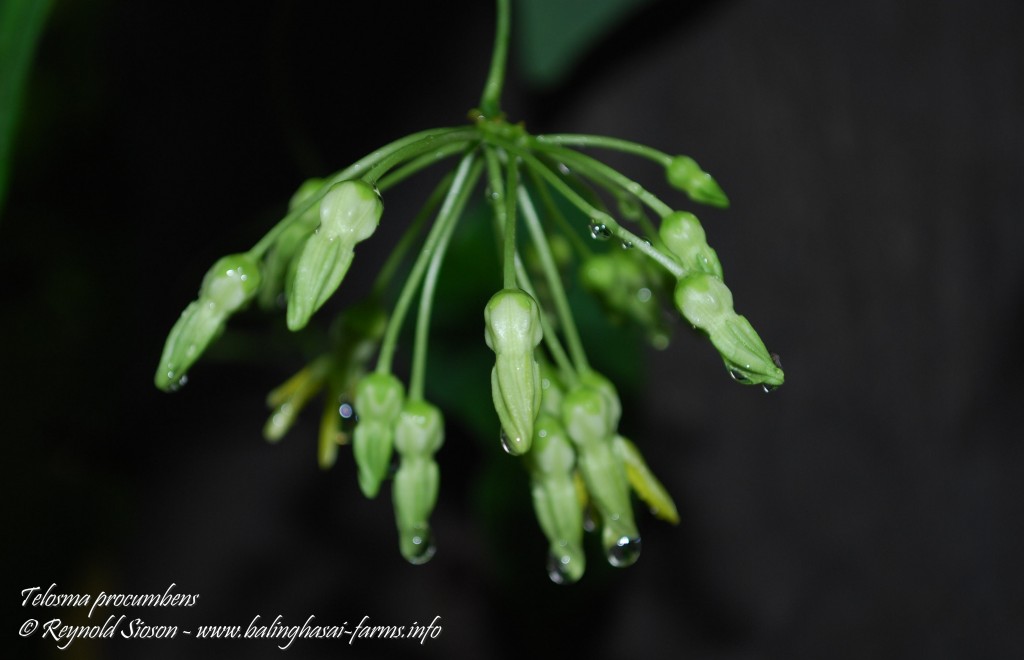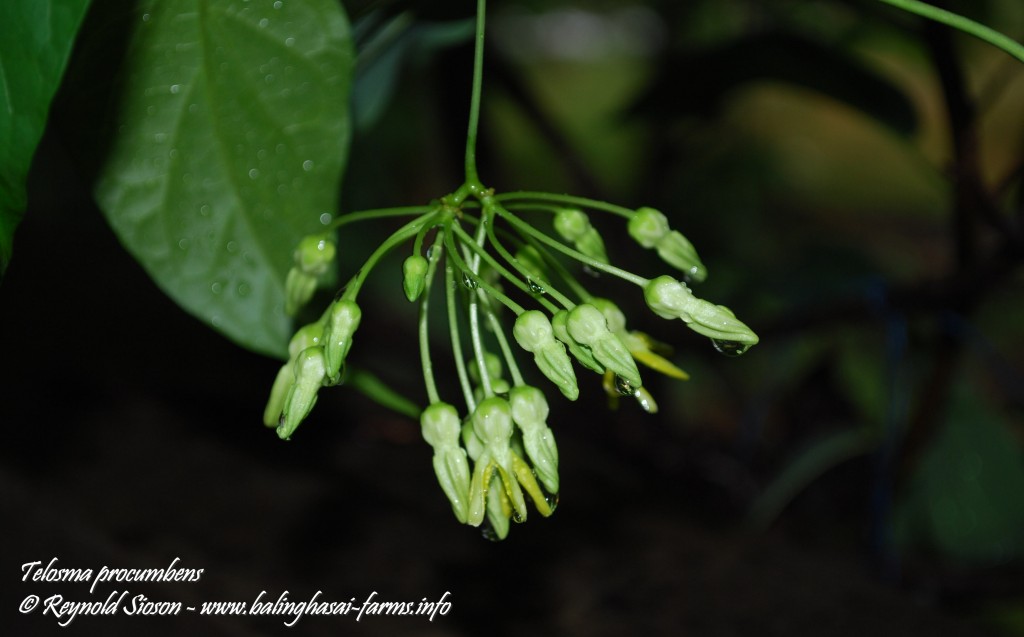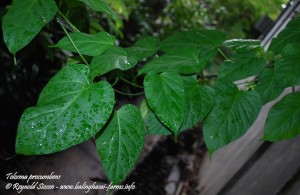What can be considered as the mother or the father of all modern bananas, the lowly Musa Balbisiana (Wild seeded-banana) is becoming rarer and rarer due to rapid human reclamation of woodlands primarily for housing and cultivation. Not much attention and no conservation effort at all is yet accorded to this once useful species; if anything, people will just frown at it as a weed. The seedy fruits are left for the birds, bats and rodents if not given to pigs. But what our generations don’t usually know and what our elders would surely agree on is that Musa balbisiana have the best inflorescence (puso ng saging) for use as vegetable, giving the broth a milky hue when added to “Sinigang na dalag”. At home where there are a lot of people to feed, we don’t let the inflorescence go to waste when there’s no fish to make sour soup of. It can be a little laborious but we always come-up with “Kilawin na puso ng saging” when we have these around; saute with fatty pork and add a right blend of crushed black peppercorns, vinegar, fish sauce, soy sauce and a piece of Bay leaf, this dish truly enlivens the palette. I’ve heard from Mr. Edward Agdeppa of the Agreekultura yahoogroup that during his younger days they pickle the sliced fruits in vinegary brine and this is not the lone time that I heard of this “Pickled butuan-saging”. Back then, the folks have resourceful ways of turning up table food from whatever edibles can be gathered around; a trait which I think we lost in time. Everything now seems easier. Musa balbisiana leaves also are the best kind to use for “Suman” wrap and for “Balinsuso” steamed rice so my folks say.
Specimen : Wild and cultivated
Local names : Butuan, Butuan-saging, Butuhan
Trade names : Seeded banana; Wild seeded-banana
Botanical name : Musa Balbisiana
Family : Musaceae
Specimen height : 4-6 meters
Trunk : Pseudostem erect, columnar, herbaceous, green to dark brown
Lea : Afs typical with Banana leaf - Elliptic, large, flexible, with prominent midrib, surface waxy, light to deep green
Flower : As typical with Banana inflorescence - Purplish, waxy bracts cover the flowers in layers; Oftentimes refered to as Banana heart
Fruit : As typical with all Banana - a Berry; Clustered (or bunched?), individual fruits 4-angled, tapering on both ends, light green or green to yellowish; Pulp starchy, whitish and filled with small, numerous, brownish to black, roundish seeds; Rind easy to tear or peel when ripe
Fruiting season : Year round
Traits : Drought tolerant; Evergreen; Fast growing; Large herb; Parthenocarpic; Prolific in producing suckers; Tolerant of occasional water-logging
Recommendations : Agroforestry; Backyard planting; Erosion control; Fruit collector’s item; Hedging; Nurse tree; Riparian manegement; Wildcrafting; Windbreak
Used for : Fruits are edible but seedy; Inflorescence, otherwise known as the Banana heart, is cooked as vegetable and usually with fish; Leaves used for wrapping sweetmeats, desserts and other food items; Animal fodder
Native range : Sri Lanka to Southeast Asia (including the Philippines)
National conservation status : Not threatened in the Philippines
(Note : This, together with Musa acuminata (Saging-matsing), is the predecessor of many edible seedless bananas)
Further reading:
Species Profiles for Pacific Island Agroforestry - Banana and Plantains - an overview with emphasis on Pacific island cultivars by Randy C. Ploetz, Angela Kay Kepler, Jeff Daniells, and Scot C. Nelson http://www.agroforestry.net/tti/Banana-plantain-overview.pdf (757)
 Used for : The fruit and the seed kernel are edibe; Leaves and flowers are eaten as vegetable or used as flavoring; Bark, leaves and flowers are used in traditional medicine; Premium hardwood used for carving, interior works, in making furnitures, musical instruments, decorative veneers, plywoods and novelties; Firewood and charcoal
Used for : The fruit and the seed kernel are edibe; Leaves and flowers are eaten as vegetable or used as flavoring; Bark, leaves and flowers are used in traditional medicine; Premium hardwood used for carving, interior works, in making furnitures, musical instruments, decorative veneers, plywoods and novelties; Firewood and charcoal





